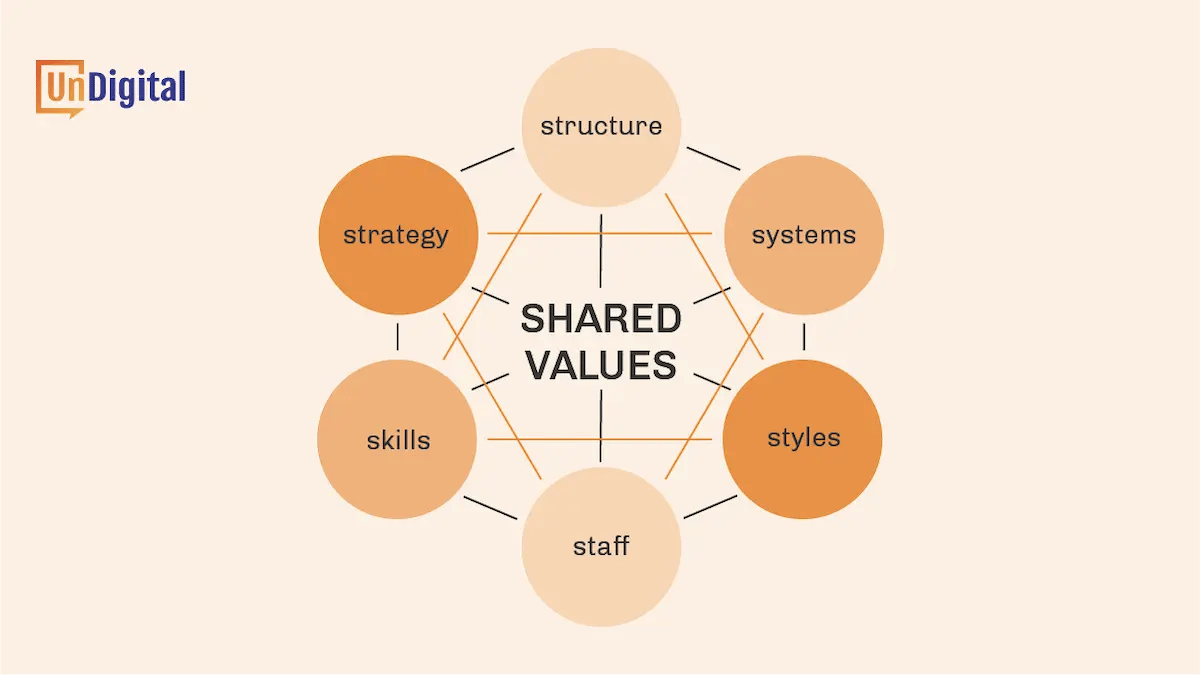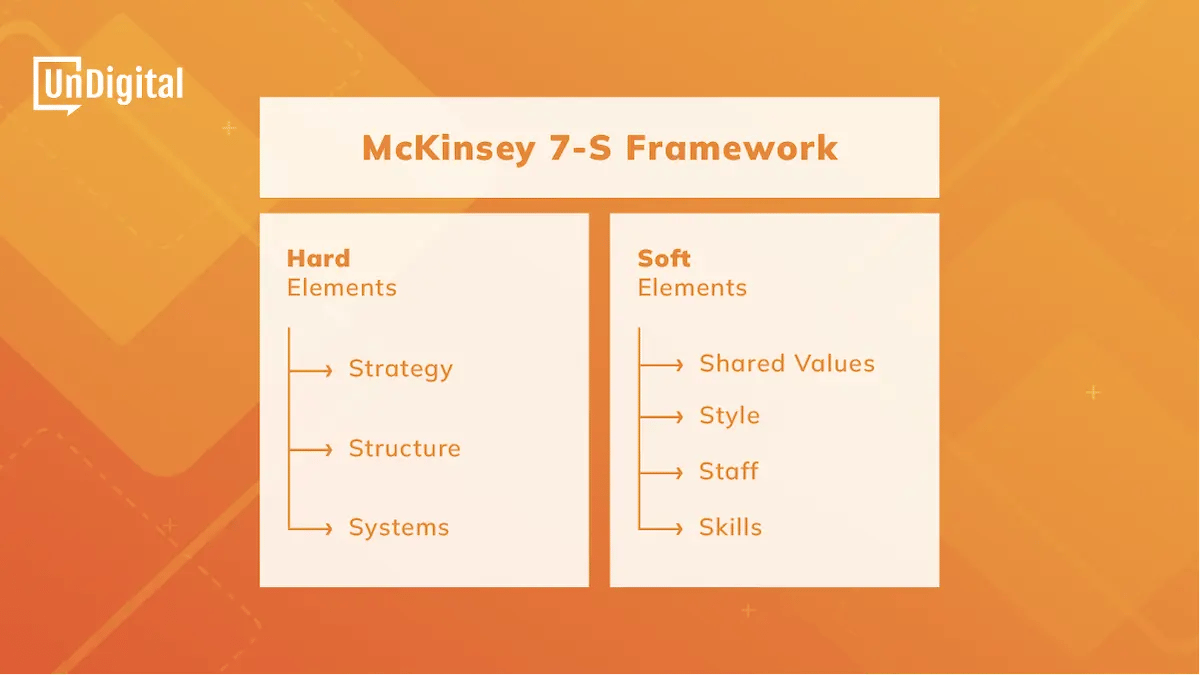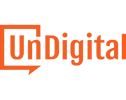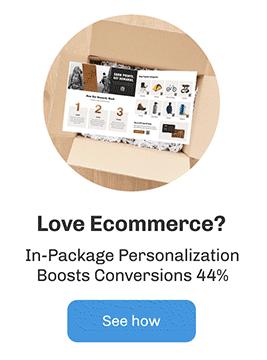McKinsey 7-S Framework for Evaluating Organizations and Teams
Since the 1980s, a system known as the McKinsey 7-S Framework has been helping improve organizational effectiveness in businesses of all sizes. The goal of this framework is to help businesses successfully make changes and find success.
At the heart of the 7-S Framework are seven internal elements of an organization that need to align for a company to be successful. Even though this approach has been around for decades, it continues to stand the test of time, even when other organizational models go in and out of prominence.
Do you want to see how well your Ecommerce organization is positioned to achieve its goals with the 7-S Framework?
McKinsey 7-S Model |
When Should You Use the McKinsey 7-S Model?
The McKinsey 7-S Model is typically used to improve performance and manage change in organizations by ensuring they all work together in harmony. Today it is known as one of the most valuable and enduring strategic planning tools. This model can be used in a number of situations where your organization needs to work together.
Many people use the McKinsey 7-S Model to improve organizational performance or to examine the impact of future changes in their organization. The most common uses of the 7-S model are:
- To usher in organizational change
- To help implement new company strategies
- To identify how different areas can change moving forward
- To facilitate mergers
Businesses of all sizes tend to prefer this model because it's easy to scale and works on everything from small group projects to large organizations.

What Are the Seven Elements of the McKinsey 7-S Framework?
The main component of the McKinsey 7-S Framework is that every category is separated into either “hard” or “soft” elements.
The Hard Elements are:
- Strategy
- Structure
- Systems
The three hard elements are fairly easy to identify and are most easily influenced by direct management.
The Soft Elements are:
- Shared values
- Skills
- Style
- Staff
The four “soft” elements are more difficult to pinpoint as they are often less tangible from a management position, and are more easily influenced by company culture. However, that doesn’t make them any less important. In fact, all of these elements are directly related and if one component doesn’t work, then it will impact the rest of the elements.

How Does Each of the McKinsey 7-S Elements Work?
Before diving into how each of these elements impacts the other, it’s important to understand what each individual McKinsey S-7 element is and how it works.
- Strategy. This is your organization’s plan for building an advantage over the competition and maintaining that competitive edge.
- Structure. This is how your company is organized, including how different departments and teams are structured.
- Systems. These are the daily activities and procedures that team members use to get the job done.
- Shared Values. Your shared values, or core values, reflect what means most to the organization and its general work ethic. This is the most central to all other critical elements in the McKinsey system.
- Style. This is what leadership approach or “style” your company uses.
- Staff. Your team members and their capabilities are at the heart of the 7-S system.
- Skills. The final S represents the actual competencies and unique skills of the company’s employees.
When these seven elements are balancing and reinforcing one another, it creates an environment for your company to perform well.
How Do You Implement the McKinsey 7-S System?
Understanding the components of the McKinsey 7-S system is only half the battle, you also need to know how to apply the system in real-world settings. The following steps will help:
Step 1: Identify Problematic Areas
The first step in implementing this tool is to identify the areas of the business that are not effectively aligned with one another. First look at each of the components of the system and note how they are aligned in your company.
Writing these out will help you identify gaps, inconsistencies, and weaknesses in the relationships between each of these elements. For example, maybe you have a strategy in place, but the structure of a certain program can hinder that strategy’s performance. This would be a potential weakness.
Step 2: Determine an Optimal Organization Design
After identifying potential problem areas, the next step is to figure out what type of organizational design you want to achieve. This will help you set goals and make achievable action plans. You’ll have to perform some benchmarking to determine how other organizations have coped with change as you develop a plan.
Step 3: Decide Where (and What) Changes You Need To Make
This will be your action plan and will detail the areas you want to realign and how you want to make those changes. You will need a detailed plan to make certain your firm’s structure and management styles are aligned with your company’s values.
Step 4: Implement Changes
This is the most important step in the process—making changes. Make sure to identify the individuals in your company or the outside consultants that are best suited to usher in these changes.
Step 5: Keep Reviewing the 7-S
The most important thing to remember moving forward with the 7-S is that they are constantly changing. And once one of these elements is changed, it will impact everything else. This is why continuous reviews and tweaking of the system are so important to maintain order within your company.
There is a reason that organizations have been relying on the McKinsey 7-S model for decades and why it continues to be the gold standard for managing change in the workplace.
 You've made it this far and you've learned so much. Congratulations!
You've made it this far and you've learned so much. Congratulations!
If you're looking to learn more about marketing or Ecommerce in general, feel free to reach out to us at: solutions@undigital.com
You May Also Like
These Related Stories

An Introductory Guide to Customer Retention

Ecommerce Marketing Strategies That Actually Work


